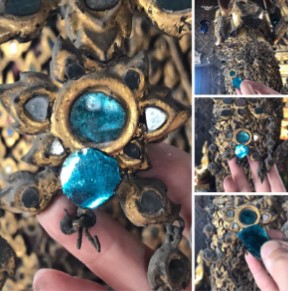Science and conservation and rehabilitation of material science for the restoration of Kriab mirror in Thai Arts.
Keywords:
kriab mirorAbstract
Abstract
Conservation of Thai artifacts in the era of globalization Nowadays, modern scientific and scientific processes are used for sustainable restoration and conservation. Therefore, the guidelines for the restoration of art objects decorated with people. The glass is therefore focused on aesthetics and craftsmanship studies. by integrating more scientific processes into another dimension to connect relationships From the evidence of traces of art that exist. The restoration approach uses scientific studies to correlate the correlation with the evidence of cracked glass traces built in the past. With X-ray techniques, Energy Dispersive X-Ray Fluorescence Spectrometer (EDXRF) can perform qualitative analysis in a short time and can detect many elements at once without damaging or causing material loss. original condition Used to determine the elemental composition of surfaces from the submission of antique torn glass samples. from the base of Phra Sri Sakyamuni in the Grand Palace Wat Suthat Thepwararam Ratchaworawihan In the examination of the elements, it was found that The glass texture of the cracked glass is mainly composed of lead 60-70% by weight, consistent with the paint mixing formula. Of the family line Tajaya (Tajaya). with lead as the main component When tested for hardness according to the Mohr's scale of hardness equal to 2-5 and high brittleness. This revival of materials science A slitted mirror made according to the ancient formula inherited from the Tejaya family. by the application of scientific methods combined with technical historical knowledge. This makes it possible to restore and restore Thai works of art such as a case study of ancient picture frames in harmony and maintain spiritual values. Materials science by using a glass scraper in the restoration that is closest to the original one.

Downloads
Published
Issue
Section
Categories
License
Copyright (c) 2022 The Journal of Applied Science

This work is licensed under a Creative Commons Attribution-NonCommercial-NoDerivatives 4.0 International License.

